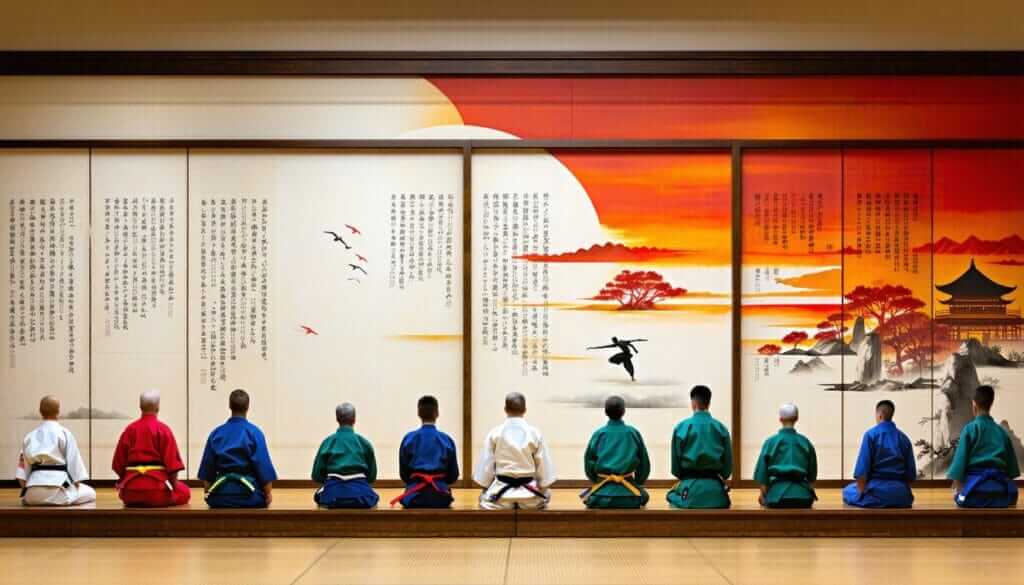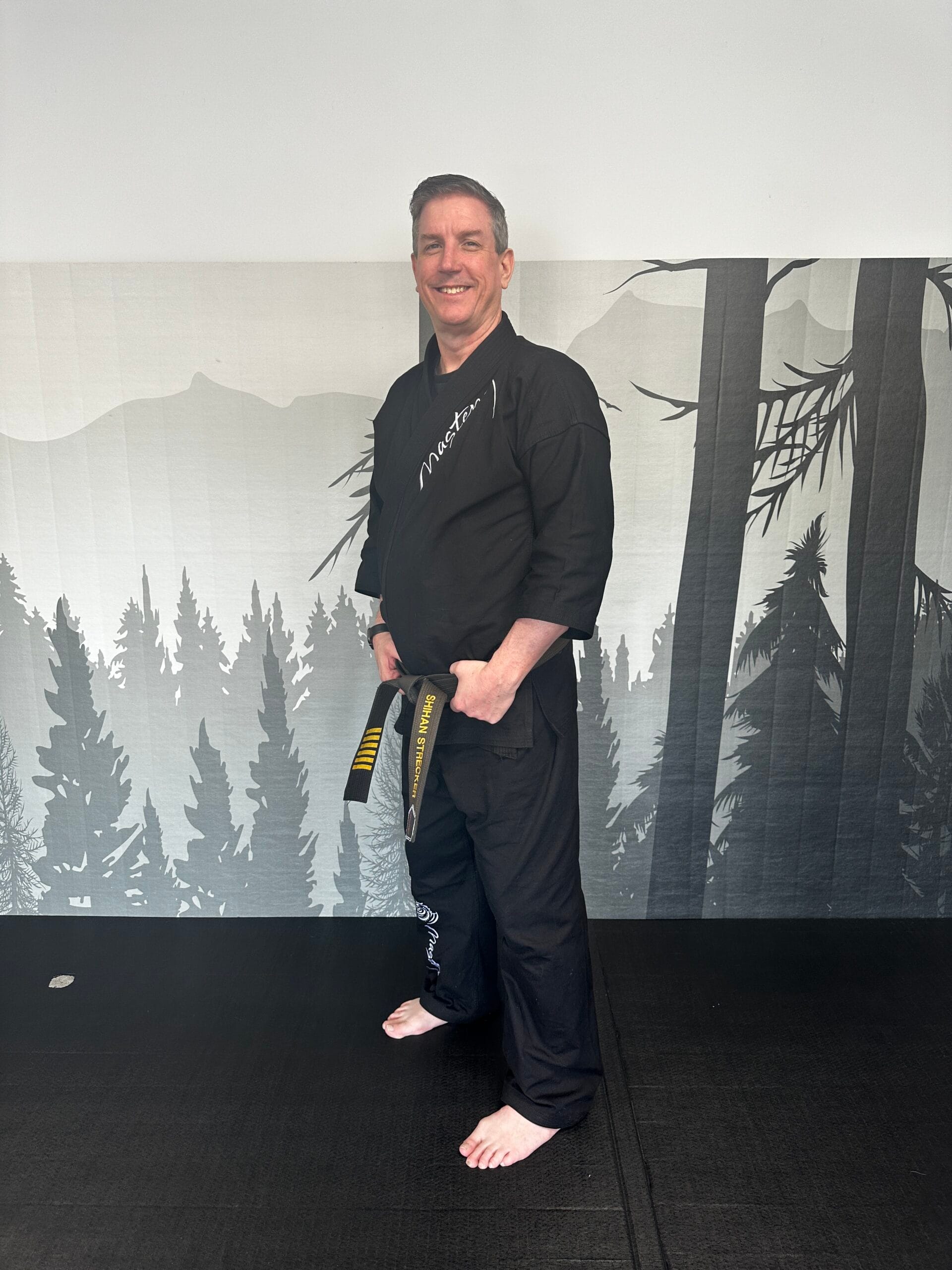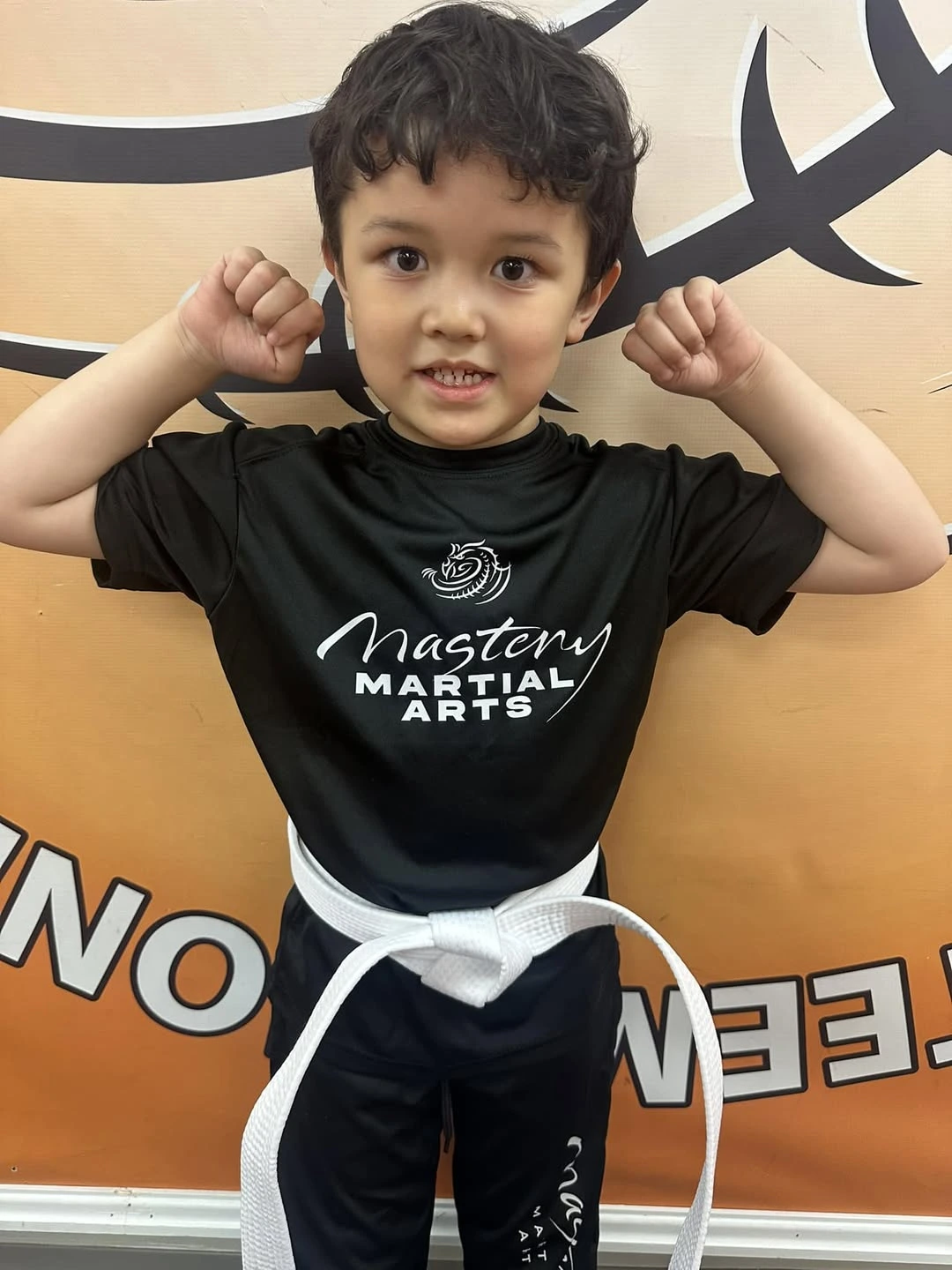Evolution of Martial Arts Belts
Introduction of Colored Belts
Martial arts belts have come a long way since their start in Japan in the late 1800s. Back then, life was simple in the dojo with just two belt colors: white and black. If you saw someone with a white belt, they were just dipping their toes in, while a black belt meant the person knew their stuff. Straightforward, but a bit too basic for the diverse levels of skill found among students.
Fast forward to the 1930s and ’40s, and a European martial arts enthusiast decided to shake things up by adding new colors to the mix: yellows, oranges, greens, purples, blues, and reds. These colors made it easier to figure out who was at what level, helping teachers track progress better and giving students clear goals for what to aim for next.
| Belt Color | Meaning | Average Duration to Next Rank |
|---|---|---|
| White | Beginner | 3 months |
| Yellow | Novice | 3-6 months |
| Orange | Intermediate | 6-9 months |
| Green | Proficient | 9-12 months |
| Blue | Advanced | 12-18 months |
| Purple | Expert | 18-24 months |
| Brown | Near-Master | 24-30 months |
| Black | Master | Varies |
Jigoro Kano’s Contribution
Jigoro Kano, the mastermind behind Judo, crafted the first official ranking system back in 1883. He gave the martial arts world the original boost it needed with the white and black belt concept.
Kano didn’t just stop with white and black belts. He saw the potential in using a spectrum of colors to reflect each student’s skill and dedication levels. White for the newbies, full of curiosity and excitement, progressing all the way up to the celebrated black belt worn by seasoned experts. This evolving color system not only created a motivational atmosphere but it built a culture of continuous learning and striving for excellence.
His belt brainwave stretched far beyond Judo, influencing a global shift in martial arts as other styles began adopting similar systems. The uniform progression helped build a shared understanding and sense of community among martial artists everywhere. Over the years, this belt system has been reimagined and fine-tuned, crafting an intricate legacy all tied together by the symbolic colors.
If you’re curious about how some specific martial arts have developed their belt ranks, check out our deep dives into belt ranks in karate history and belt ranks in taekwondo history. There’s a treasure trove of stories that paint a full picture of where these systems come from and how they continue to grow.
Pioneers of Belt Colors
A spectrum of belt colors in martial arts hardly seems like a big deal now, but we owe thanks to some sharp minds who thought, “Hey, why stick to just black and white?” Enter the legends—Gichin Funakoshi and Mikinosuke Kawaishi. These folks were all about shaking things up and, boy, did they ever! They turned the curious eyes of students toward a belt system that’s colorful both literally and metaphorically.
Gichin Funakoshi’s Influence
Gichin Funakoshi, this bigwig known for founding karate, swapped out the old-school approach of plain white and black belts for a more vibrant line-up—think yellow, orange, green, and blue. This wasn’t just a style makeover; it was a game-changer. By adding colors, Funakoshi gave karate students a way to visually see how far they’d come, like checking boxes on a to-do list, keeping them fired up to kick and chop their way through practice. Eager for the whole backstory on karate’s evolution? Slide into our belt ranks in karate history piece for the scoop.
Mikinosuke Kawaishi’s Innovation
Let’s time-travel to the 1930s when Mikinosuke Kawaishi figured martial arts needed a splash of color for the Western crowd. So, he tossed aside the traditional style and cooked up a new palette that let folks earning their way to a black belt feel their effort wasn’t just a long grind but an exciting journey. This genius idea helped make sense of progress, giving students those little victories to keep their spirits high. Tucked in the colorful belt system tale is more about Kawaishi’s influence—don’t miss our martial arts belt ranking origins for a deeper dive.
Funakoshi’s and Kawaishi’s shake-up lives on, as these colorful belts are now markers of hard work and skill in martial arts schools everywhere. Want to track the belt evolution and get the complete run-down of all the who’s who and what’s what? Peek into our martial arts belt ranking timeline and get the story from the start.
Development of Belt Ranking System
The belt ranking system in martial arts has grown to map out the world of training programs, showing how students improve like a bar graph in the rainbow of belts.
Introduction of Additional Colors
Jigoro Kano, the brains behind judo, kicked off the whole thing with simplicity: a white belt for greenhorns and a black one for seasoned vets. Martial arts picked up speed, especially karate, and with it grew the rainbow of belt colors. Gichin Funakoshi, karate’s main man, really painted the town by tossing in yellow, orange, green, and blue belts, helping to sort out who knows what among the students.
Here’s how the belt ladder usually looks in modern martial arts:
| Rank | Belt Color |
|---|---|
| 1st | White |
| 2nd | Yellow |
| 3rd | Orange |
| 4th | Green |
| 5th | Blue |
| 6th | Brown |
| 7th | Black |
Incorporation of Brown Belt
By the groovy ’60s, brown belts made their debut in the martial art scene. It became the pit stop between the colorful belts and the all-important black belt. This new shade of brown signaled that practitioners weren’t just hanging around but were building themselves up for the big leagues.
Adding belts wasn’t just about splashing more color; it showed growing chops and know-how, while also keeping the motivation meter topped up. Understanding its rollercoaster journey adds another layer to appreciating martial arts’ epic history and its blend of mind, body, and tradition.
Want the deeper scoop on what each belt color stands for in cultural and symbolic realms? Check out our articles on martial arts belt colors meaning and martial arts belt ranking traditions.
Meaning of Black Belt
In the martial arts world, a black belt is like the gold star. It’s not just about moving up the ranks; it’s about showing you’ve put in the sweat, time, and heart. Knowing what this belt stands for and the levels it holds helps you get why it’s such a big deal to martial artists.
Symbolism of Black Belt
Think of the black belt as the badge you wear after years of punching, kicking, and thinking about all those moves. It’s like you’ve reached the top of the martial art mountain, but instead of stopping, you’re just tuning in to the good stuff. It shows your skills have gone from zero to hero, but it’s also about your brain power. This belt isn’t just about putting someone in a headlock; it’s about knowing why you’re doing it and what it all means.
In many martial arts, getting your black belt means you’re not only good at kicking high but also at thinking deep. It shows you’ve grown and learned, not just about karate chops but about life, too. Higher levels, or dan ranks, mean you’ve been at it for so long, you’re practically an encyclopedia of your martial art.
Degrees of Black Belts
Black belts aren’t a one-size-fits-all. There’s a whole ladder of levels called dan, and each step means you’ve pushed your skills and brains a bit further.
| Degree | Title | Description |
|---|---|---|
| 1st Dan | Shodan | First step into the big leagues. |
| 2nd Dan | Nidan | Shows you’ve ramped up your game. |
| 3rd Dan | Sandan | People start seeing you as a serious player. |
| 4th Dan | Yondan | Deep dive into teaching others. |
| 5th Dan | Godan | You’re now the Yoda of your dojo. |
| 6th Dan | Rokudan | Teaching’s in your blood, and you’ve got stories to tell. |
| 7th Dan | Nanadan | Been around the block for a good while. |
| 8th Dan | Hachidan | The cream of the crop. |
| 9th Dan | Kyudan | Martial arts legend status. |
| 10th Dan | Judan | You’ve reached mythical levels of cool. |
Those dan levels are there to remind you that even when you think you’ve made it, there’s always more to learn,
Hitting black belt life isn’t the finish line but just where the real fun begins. Wanna explore more about what those colorful belts mean? Check out martial arts belt colors meaning.
Meaning Behind Belt Levels
Belt ranks in martial arts aren’t just about moving up the ladder; they’re about gathering wisdom and highlighting the need for grit and commitment. This organized method helps students in their journey toward skillful mastery, bringing along essential life lessons.
Wisdom Woven into the Belt Levels
Belt colors do more than mark physical prowess—they serve as mentors in life. Each belt is a tale—a story of patience, grit, modesty, and courtesy. As students climb the colorful ladder, they realize that growth doesn’t peak with only one belt but flows as a lifelong journey.
| Belt Color | Lesson to Learn Made Clear |
|---|---|
| White | Innocent start, a blank slate |
| Yellow | First goals, newfound focus |
| Green | Improving skills, thriving through challenges |
| Blue | Deep understanding, clarity |
| Brown | Beginning mastery, deeper dive |
| Black | Marks mastery, a fresh quest begins |
Every belt worn around the waist isn’t merely a token of technical skills but a marker of personal growth. Students are nudged to reflect on these lessons and weave them into the fabric of their daily lives.
The Role of Sticking With It
Staying power is key when karate-kicking your way up to higher ranks in martial arts. For instance, earning a black belt in karate typically requires a commitment of approximately five years. Along the way, every belt is a testament to the student’s promise of excellence in moves, sparring, and mental focus.
Martial arts training demands steady effort and tenacity. As learners face hurdles head-on, they come to delight in the act of getting better and in the grit of hard graft.
Beyond just improving their skills, the belt system encourages students to set goals and track their progress. These steps help keep the fire of motivation burning brightly throughout their martial arts adventure. Want to dig deeper into these grounding concepts? Explore our posts on the development of martial arts belt rankings and the traditions surrounding them.
The Meaning Behind Martial Arts Belt Colors
Martial arts belts aren’t just snazzy to look at, they’re jam-packed with meaning. Each color tells a part of the story on the practitioner’s path from novice to expert. Let’s take a peek at what each shade signifies along this colorful ride.
What Those Belt Colors Really Mean
While different martial arts schools might have slight variations in their belt colors and meanings, there’s a general agreement on what they symbolize. Check out this handy guide:
| Belt Color | What It Stands For |
|---|---|
| White | Beginning steps, purity, newbie vibes |
| Yellow | The journey begins, learning the ropes |
| Orange | Growing confidence, early wisdom |
| Green | Knowledge takes root and blooms |
| Blue | Taking on the tough stuff with skill |
| Purple | Footwork finesse and swagger |
| Brown | Ripe for tackling new challenges |
| Red | Practicing control, holding back the power |
| Black | Mastery met and new horizons ahead |
This belt system, a hallmark in martial arts today, owes a lot to judo maestro Kawaishi Mikonosuke. He cooked up this system back in the ’30s to spark motivation among his students and French Police jujutsu learners.
The Deep Dive into Belt Colors
Every belt color isn’t just an accessory; it’s a badge of honor that marks progress in both skill and personal growth. Climbing the ladder of colors is like crossing off levels in a video game, boosting motivation and laying out clear benchmarks.
Hitting the black belt level? That’s like reaching the top of a mountain: a big deal. It’s about mastering the art, conditioning your bod, and sharpening mental focus. But guess what? It’s also a beginning, not an end. Here’s where you step up, possibly taking on a teaching role and lending a hand to the newcomers in their martial adventures.
For more tales and trivia on belt colors, rankings and traditions, dive into our other pieces on martial arts belt colors meaning, belt ranks in karate history, and martial arts belt ranking traditions.




